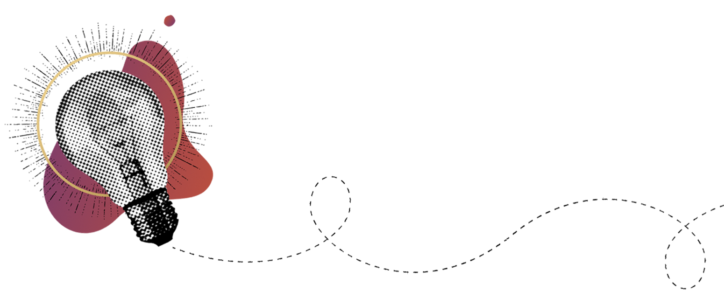The internet is a powerful tool for any brand or business to reach potential customers in any market, near or far. But there are also significant threats, especially regarding data and cybersecurity.
In a world of accelerating digitization, especially in the wake of the pandemic, firewalls and passwords just aren’t enough anymore. Anyone can become vulnerable to a cybersecurity issue anytime, and the consequences can be severe.
Cyber-attacks and data breaches are becoming more frequent, targeted, complex, and severe — and small to mid-sized businesses are especially vulnerable. According to forecasters, more than 33 billion records will be stolen by 2023, a 175% increase since 2018. What’s more, the cost of data breaches is expected to reach a total of $10.5 trillion by 2025.
One more shocking statistic: Inc. reports that 60% of all small businesses that suffer a data breach end up closing down within six months…permanently.
To minimize risk, stay competitive, and safeguard your brand’s revenue, reputation, and future, it’s critical that you implement these four cybersecurity best practices throughout your operations. Keep reading to discover more.
Data and Cybersecurity in 2022: 4 Best Practices for Brands

Require Two-Factor Authentication
Two-factor authentication, also called multi-factor authentication, 2FA, or MFA, is one of the most vital and effective tools to strengthen your online account security. Essentially, two-factor authentication provides an extra layer of protection beyond usernames and passwords, which, while still essential, are not foolproof.
Human error, password recycling, weak passwords, and security fatigue can create the circumstances for a password to become compromised. If that should occur, two-factor authentication prevents a cybercriminal from gaining access to your accounts by requiring a second piece of information, such as a secret question, biometric pattern, or PIN.
Authenticator software, such as Google’s 2-Step Verification, can send a randomly-generated, single-use code to your email or smartphone to verify your identity.
When you use Two-factor authentication, your accounts may remain secure even if a hacker steals your password…so use it!

Use Strong Passwords and Encryption
Strong passwords and encryption are cornerstones of good data security. However, the number of passwords we all need to keep track of is skyrocketing — a recent study found the average individual is juggling an astonishing 100 passwords!
To put it simply, that is just too many to remember. So many people end up reusing passwords across multiple accounts. That means if a hacker gains access to your Netflix account, they may be able to get into your work email as well!
A password manager can help. This type of software application can take human memory out of the equation by automatically generating unique, long, and complex passwords for every account while managing and storing them in an encrypted database.
Speaking of encryption, this method of converting information into a secret code is also key to the safe management of sensitive data.
How does it work? In much the same way as codes have worked for generations! An algorithm uses a formula to turn data, or plaintext, into a unique code, or ciphertext. The encoded data can then be stored or sent over networks more securely, as reading the data would require the formula’s key. The key decodes or decrypts the data for the intended recipient, but if that data is intercepted en route, the cybercriminal will only gain access to the encoded version.
You can and should apply encryption to all sensitive files to shield them from unwanted eyes.

Install and Maintain Up-to-Date Software
Those pesky software updates may be annoying, constantly popping up at the worst moments. But they are another highly important defense against cyber threats. (Even Apple does them!)
Software updates often include security patches to address vulnerabilities, so when departments use outdated software, they open themselves up to the risk of a breach.
Prioritize functionality and compatibility over brand recognition during software selection and purchasing. Furthermore, consider purchasing a software maintenance plan. They are generally inexpensive, but the cost of carelessness can be high if a hacker attacks your company.
Ensure your IT team keeps all software up-to-date, and caution your employees about the dangers of the “Remind Me Later” button!

Train Employees in Data Security Practices
When it comes to your employees, properly train them in data security practices. Employees who are ill-informed or inattentive to best practices may inadvertently share or send sensitive information through unsecured emails, transfers, or networks.
You can also work to establish a culture of security throughout your company in the same way you might pursue a culture of excellence or innovation.
When hiring new employees, make data security a priority during the interviewing and onboarding process. You may also consider requiring all employees to sign an acceptable use policy (AUP) that outlines the appropriate and inappropriate uses of digital devices, emails, and other communication channels.
To create the right environment for security, foster a collaborative atmosphere by encouraging your cybersecurity team members to work together, share ideas, and help each other grow.
Finally, communicate your security policy and commitment to security clearly and often. Holding regular company-wide meetings where you discuss the importance of data security and review best practices would be an excellent start.

S2’s Commitment to Cybersecurity
At Sociality Squared, we take cybersecurity and data protection very seriously. We routinely utilize all of the best practices outlined here and more. To learn more about how we keep client data and our own data safe, and to discover how we can help your brand, click here to get in touch today.
Subscribe to our monthly S2xAccess newsletter:
